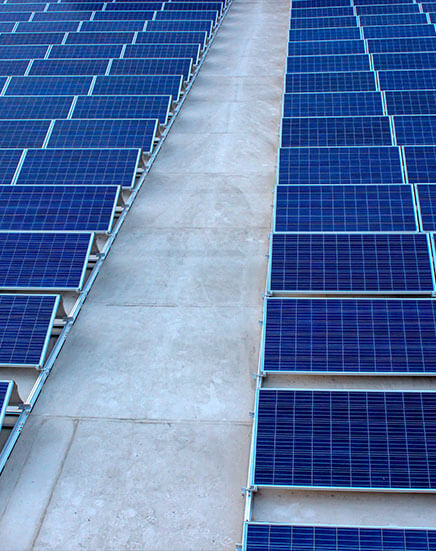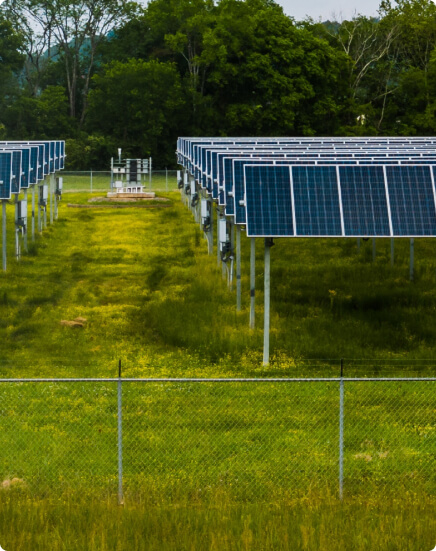
Why Choosing Your Neighborhood Community Solar Grid is the Best Idea You’ve Ever had
Date: May 6th 2021
Most communities enjoy a number of benefits when they work together towards a unifying goal. Community solar programs are on the rise yet, despite the growth that the industry has so far cultivated over the past 10 years, many people have been unable to take part in this revolution. Numerous communities still cannot benefit from renewable energy due to barriers that keep them from adopting solar on an individual level. Many Americans lack the ability to install a traditional solar power system on their home or property. Could community solar be enough for the 50%? Yes, if communities cooperate.
What Community Solar is all about
A solar facility that offers a shared system is what we call community solar. It is basically a collection of solar panels that enable power sharing in surrounding homes and businesses. By engaging with these community solar projects, customers can earn credits on their electricity billing for energy generated and distributed through their local grid.
These developments are also referred to as community solar farms, or gardens. They reach out to customers who wouldn’t normally opt for renewable energy. Yet, a drawback is that only the businesses and residents who invest in the program receive the credits for it.
To understand the inner workings of a community solar program, let’s delve a little deeper. To lay out the foundation of a program and get it up and running, companies must first invest in a good number of panels in large, open sunny areas. Imagine smaller versions of the solar facilities you see spanning across the desert on news.
Once done, we start generating power that can be fed to the electrical grid powering that community. This way, everyone is enjoying the benefits of shared renewable energy, but only customers who contribute to the solar program earn credits for it. The amount of credit they receive depends on their property size and how much electricity the project was able to produce. We can all thank the concept of virtual net metering for this.
Virtual Net Metering
When you have standard net metering, local utility companies pay individual owners for excess electricity that their rooftop solar panels produce and is fed into the grid. But with virtual net metering, you receive bill credits for amount of energy the community solar farm fed into the grid in proportion to the size of your property. The idea behind it is simple, to encourage more members of the community to choose the solar community farm so that the project may be able to quickly expand.
Types of Community Solar Programs
America lacks a unified electrical grid. Not all states, cities or regions share their energy grid or even energy regulations. However, these specific attributes of each region have been useful in initiating and sustaining beneficial solar programs.
Utility Sponsorship
Forward thinking utility companies operate solar projects on a reasonable scale, in hopes of expansion as they gain investments in renewable energy. If you live nearby a community solar garden, the utility company of your area can help you sign up for it. This seems to be the most viable option for long-term residents in neighborhoods where it isn’t viable to install solar individually
Private Companies
Companies that want to invest in solar power generation on a smaller scale allow customers to buy short- or long-term ownership stakes in the company in return for solar energy from that particular solar farm. This serves as a good option for companies that are unable or unwilling to create a community solar program on their own.
Subscription Programs
This is perhaps more affordable than any other option. You simply pay a monthly fee for a set number of solar panels that are required to power your home on a monthly basis. This option gives customers zero ownership over their solar so it can be a perfect plan for low-income customers because it allows them to enjoy all the benefits of renewable energy at a minimal cost.
You can find the right community solar program in your area by checking with your local utility company.
Why choosing your neighborhood community solar grid is the best idea you’ve ever had.
Date: May 6th 2021
Despite our general obsession with individual success, most communities enjoy a number of benefits when they work together towards a unifying goal. Community solar programs are on the rise, yet, despite the growth that the industry has so far cultivated over the past 10 years, many people have been unable to take part in this revolution. Numerous communities still cannot benefit from renewable energy due to barriers that keep them from adopting solar on an individual level. Almost 50% of Americans lack access to a traditional solar power system and that fact can pave the way for future developments alone.
Could Community Solar be enough for the 50%? Yes, if communities cooperate.
What Community Solar is all about
A solar facility that offers a community solar system is what we call Community Solar – this is basically just a collection of solar panels that enable power sharing in surrounding homes and businesses. By engaging with these community solar projects, customers can earn credits on their electricity billing for the amount of energy generated and distributed through their local grid.
These developments are also referred to as Solar Farms, or gardens, depending on the locale. They reach out to customers who wouldn’t normally opt for renewable energy. Yet, a drawback is that only the businesses and residents who invest in the program receive the credits for it.
To understand the inner-workings of a community solar program, let’s delve a little deeper. To lay out the foundation of a program and get it up and running, companies must first invest in a good number of panels in large, open and sunny areas with sun exposure. Imagine smaller versions of the solar facilities you see spanning across the desert on news channels, if you will.
Once done, we start generating power that can be fed to the electrical grid powering that community. This way, everyone is enjoying the benefits of shared renewable energy, but only customers who contribute to the solar program earn credits for it. The amount of credit they receive depends on their property size and how much electricity the project was able to produce. We can all thank the concept of virtual net metering for this.

Virtual Net Metering
When you have standard net metering, local utility companies pay individual owners for excess electricity that their rooftop solar panels produce and is fed into the grid. But with virtual net metering, you receive bill credits for amount of energy the community solar farm fed into the grid in proportion to the size of your property. The idea behind it is simple; to encourage more members of the community to choose the solar community farm so that the project may be able to quickly expand.
Types of Community Solar Programs
America lacks a unified electrical grid; not all states, cities or regions share their energy grid or even energy regulations. However, these specific attributes of each region have been useful in initiating and sustaining beneficial solar programs.
Utility Sponsorship
Forward thinking utility companies operate solar projects on a reasonable scale, in hopes of expansion, as they gain investments in renewable energy. If you live nearby a community solar garden, the utility company of your area can help you sign up for it. This seems to be the most viable option for long-term residents in neighborhoods where it isn’t affordable to install solar panels individually.
Private Companies
Companies that want to invest in solar power generation on a smaller scale allow customers to buy short or long term ownership stakes in the company in return for solar energy from that particular solar farm. This serves as a good option for companies that are unable or unwilling to create a community solar program themselves.
Subscription Programs
This is perhaps more affordable than any other option, where you simply pay a monthly fee for a set number of solar panels that are required to power your home on a monthly basis. This option gives customers zero-ownership over their solar panels, so it can be a perfect plan for low-income customers, since it allows them to enjoy all the benefits of renewable energy at a minimal cost.
You can find the right community solar program in your area by checking with your local utility company.




